Hillerbrand + Magsamen are a collaborative artistic family of four who live and work in Houston. I’ve followed their work for the past 15 years, and was thrilled to see their most recent exhibition at Heidi Vaughn Fine Art in Houston before the gallery temporarily closed due to the Covid-19 pandemic. If you haven’t watched their Five-Minute Tour video on Glasstire (also #1 pick on GT’s weekly Top Five), please do. It is funny and insightful. Stephan Hillerbrand is an Associate Professor at the School of Art at University of Houston, and Mary Magsamen is the Curator of Media and Film at the Houston non-profit Aurora Picture Show. Their children, Maddie and Emmett, are collaborators in the work that spans photography, sculpture, video, performance, and most recently, textiles.
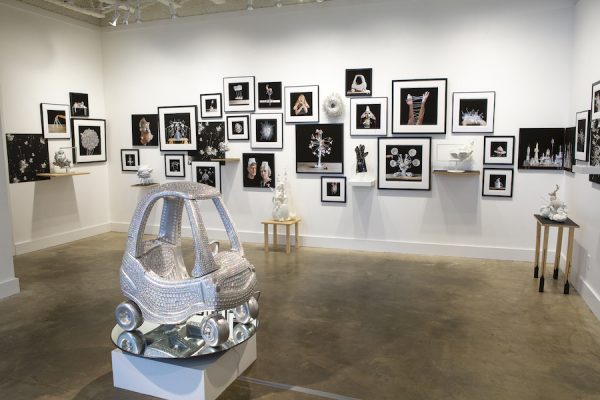
Installation view of Hillerbrand + Magsamen’s “Devices Then and Now” currently up at Heidi Vaughan Fine Art, Houston
Colette Copeland: Mary and Stephen, I first encountered your work in 2005 when I curated a video program titled Proof for the SPE Mid-Atlantic conference at George Mason University in Fairfax, Virginia. I screened two of your videos, Gum Traveling and C&M. Although your work has become much more layered and complex since then, the core element of using performance to explore the absurdity and intimacy of life has not changed. What is the trajectory of your work over the past 15 years?
Mary Magsamen and Stephen Hillerbrand: We made the video, Gum Traveling (2002) before we had kids, and Coffee and Milk (2005) was made when Maddie was just a few years old, so those seem so long ago! Thank you for continuing to support our work!
Many years ago, when we first moved to Houston, we had a pivotal and career-changing event take place in our artistic practice. While perhaps subtle to others, it had a profound impact on our practice and how we engaged with others. When our two children were very young, we hired a babysitter to take care of them, so we could go work in our studio. Sitting alone in the sterile white cube of our studio, we started to question the tenet of our practice. Why were we getting up, leaving our home and our daily lives to go someplace else to create work about our home and our daily lives? It was from that moment on that we began to use both our home, our children and those things around us in our daily life to become an integral part of our practice. It is this engagement with everyone and everything that surrounds us that has become so important. Whether taking out the recycling, going to the grocery store for the 40th time in a week, or engaging with the public doing a residency, all become part of a “Life as Practice.”
The first video we made that included Maddie was Accumulation (2010) where we stacked up all the stuff in our garage to make a giant mountain and we escaped through the hatch in the ceiling. After that we continued to incorporate the kids in every project, and now they have been more than participants — we think of them as collaborators. We like working with humor and balancing that with tension. We think of our home life as a kind of creative lab; we make mountains out of toys, cut holes in our house, and build rocket ships in our backyard.
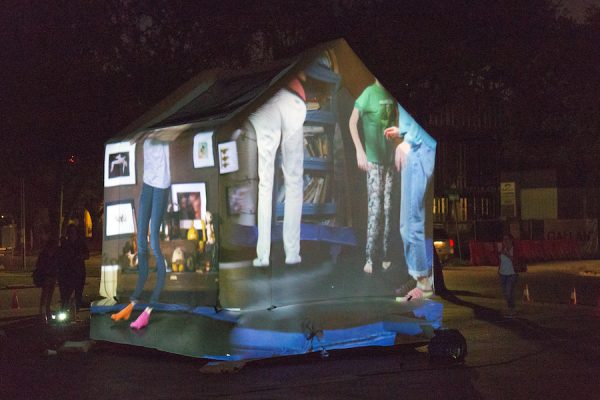
Hillerbrand + Magsamen, Home Balance, 2016. ©Hillerbrand+Magsamen. Photo Credit: David Brown. CounterCurrent Festival 2016. @Houston Center for Photography, Bounce House and 4 channel video projection
Our work has continued to explore ideas about family, consumerism, relationships and futility, with playfulness. Our interdisciplinary work, which combines video, photography, installation and performance, centers on our physical home and daily lives. Most recently, our 147 Devices for Integrated Principles project (2018-present) employs live performance and investigates how we can cope in a world that seems impossible.
For the past two years we have worked on 147 Devices for Integrated Principles, an interdisciplinary project rooted in our society’s ever-growing desire to exercise control over our lives through various devices. It was informed by our experiences during Hurricane Harvey and our need to prepare a “hurricane box” with devices such as batteries, canned food, toilet paper and bottled water. As the hurricane passed, the water receded, and our lives started to return to normal, we realized that it was actually not returning to ‘normal’ — that the feeling of being overwhelmed by many external forces that shape our world still existed. Not only was it the stress of a natural disaster, but also divisive politics, economic pressures, and concerns with aging of our elderly parents that brought us to the idea to invent new devices for more intimate and personal problems. Now, we have a new crisis on hand with Covid-19. There are so many devices that we all need right now!
We turned to the concept of Homo Faber, which is Latin for “Man the Maker” — a term that was popular with the Humanists in the 14th century. It refers to humans as controlling the environment through tools. Philosopher Henri Bergson also referred to it in The Creative Evolution (1907), defining intelligence, in its original sense, as the “faculty to create artificial objects, in particular tools to make tools, and to indefinitely variate its makings.”
Applying this idea of Homo Faber, we use everyday objects such as toys, spatulas and laundry hampers to animate everyday rituals in our home, to connect to each other and our communities and create a dialogue. A blender, tape and security camera become A Device for Growing Old. Rhinestones and extension cords become A Device for Engaging Separation. Our guiding thought is that everything from our home becomes a device. Toys hot-glued to a teakettle becomes a 3D-printed sculpture; photographs hand manipulated with string and hobby rhinestones becomes a totem; images printed on blankets and stitched becomes capes for protection.
Our work has evolved over the years, but we continue to transform found objects, invent new ways of working with objects and space, experiment with the body and performance, and consider our collaboration as a family.
CC: Mary and Stephen, I see threads of Dada and Fluxus in your work. Both art movements responded to socio-political volatility and the crisis of creating art in a time of war and conflict. How have these movements influenced your work?
Mary and Stephen: Yes! Dada and Fluxus are the core of our work. Artists such as Marcel Duchamp, Yoko Ono, Joseph Beuys and Nam June Paik have influenced us with their use of materials, humor, interaction and performance. We like to say that we make “suburban fluxus” because we live in a pretty traditional 1960s Texas ranch house with a yard, two dogs and a cat in Houston. The idea of connecting art to the everyday through public and personal interaction is important to our practice. Playfulness and humor is also something that we share with Dada and Fluxus. We enjoying taking everyday objects and transforming them into something new to create conversations with each other.
Our project, 147 Devices for Integrated Principles, applies these principles as well. We have been collaborating on this project with Kirk Lynn, Founding Director of Rude Mechs Theater and Associate Professor and Director of the theater program at the University of Texas in Austin. The musical score was composed by Grammy Award-winning musician Peter Stopschinski, who also lives in Austin. Our collaboration with them has been so fun, fluid and engaging for us.
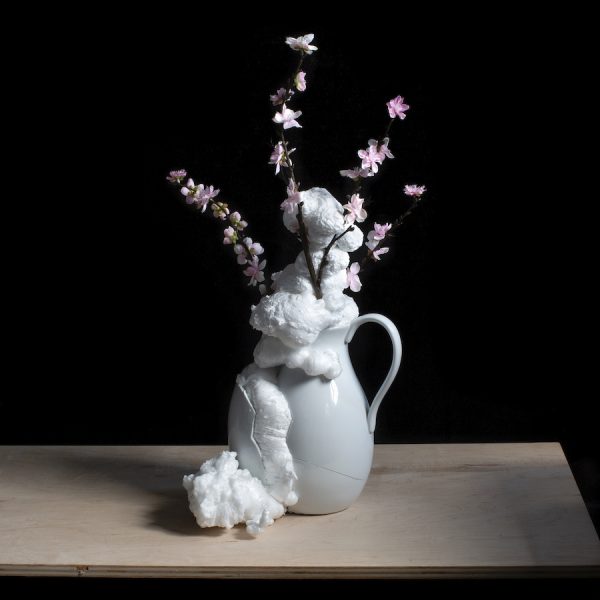
Hillerbrand + Magsamen, A Device To Make a House A Home. ©Hillerbrand+Magsamen. Archival Inkjet Print
In an interactive lecture-performance, our family presented photographs and videos in addition to asking the audience to participate with us through instructions and actions. 147 Devices are made from household objects — toys, Legos, spatulas, laundry hampers, pots, string, utensils, aluminum foil, trash cans, plastic bags, and more.
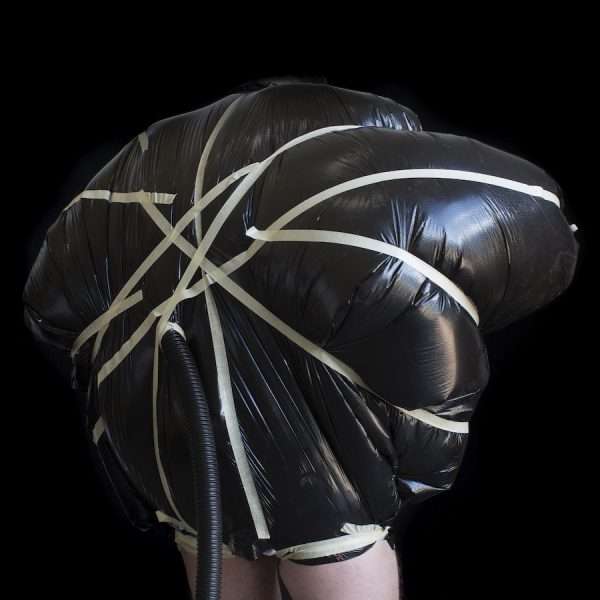
Hillerbrand + Magsamen, A Device for Swallowing the Apocalypse. ©Hillerbrand+Magsamen. Archival Inkjet Print
Unfortunately, our performance with Fusebox Festival that was scheduled for April has been cancelled due to Covid-19, but we are currently working on a way to still do a performance remotely using online systems like Zoom and Instagram. We are excited to experiment with this and being proactively responsive in a way that we can still connect with people and be creative in our artistic practices. We think this kind of flexible quick thinking — do what you can with what you have — is also a Fluxus way of making and thinking.
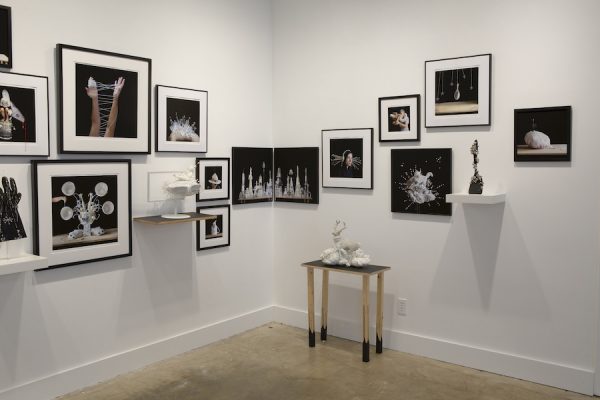
Installation view of Hillerbrand + Magsamen’s “Devices Then and Now” currently up at Heidi Vaughan Fine Art, Houston

Hillerbrand + Magsamen, A Device for Middle Age Regret. ©Hillerbrand+Magsamen. Archival Inkjet Print
Our exhibition in Houston with Heidi Vaughan Fine Art, Devices: Then and Now, has photographs, sculptures and photographic blankets/tapestries that we have created over the past two years for the 147 Devices for Integrated Principles project. In total, we have about 250 images, 12 videos, 25 sculptures and 12 blanket pieces, so this show is a sampling of some of our favorite works. We decided to hang the show salon-style to be playful and use the gallery space creatively. Our piece, A Device for Middle Age Regret, is a Little Tykes play car (the ones that are usually primary colors that little kids scoot around in) that we painted silver and bedazzled with rhinestones. This car sits on a round mirror and rotates like a car in a car show would. Another sculpture is a black plastic spatula that has silver bells glued on it, clustered together like barnacles — very much like a Duchamp Readymade sculpture. It is titled A Device for Ending an Awkward Dinner Conversation. [This show has been extended through May 9th.]
CC: Which two to three Devices from your inventions would help us survive in this time of the novel coronavirus.
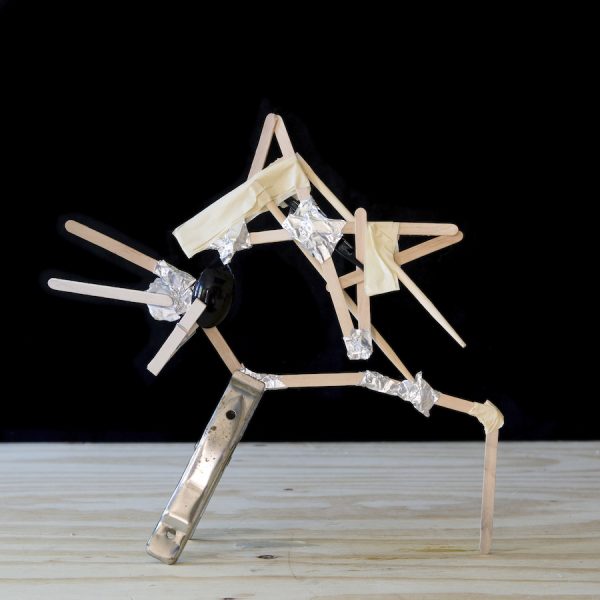
Hillerbrand + Magsamen, A Device for Removing Someone from Political Office. ©Hillerbrand+Magsamen. Archival Inkjet Print
Mary:
A Device for Patient Breathing
A Device to Remove Someone from Political Office
A Device for Swallowing the Apocalypse
A Device for Negotiating with a Teenager
Stephan:
A Device to Talk with God
A Device for Transportation
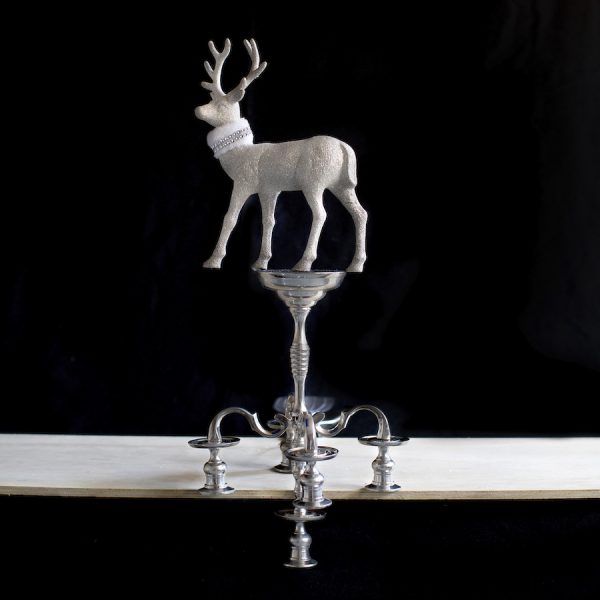
Hillerbrand + Magsamen, A Device to Get You to Leave Me Alone. ©Hillerbrand+Magsamen. Archival Inkjet Print
Maddie:
A Device to Make a House a Home
A Device to Get You to Leave Me Alone
A Device for Anticipated Deterioration
A Device for Embracing the Inevitable

Hillerbrand + Magsamen, A Device for Embracing the Inevitable. ©Hillerbrand+Magsamen. Archival Inkjet Print
Emmett:
A Device for Temporal Disintegration
A Device to Talk with God
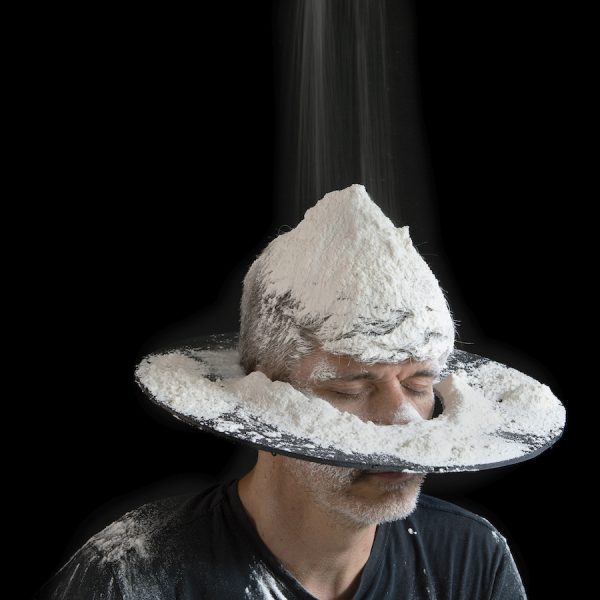
Hillerbrand + Magsamen, A Device for Temporal Disintegration. ©Hillerbrand+Magsamen. Archival Inkjet Print
CC: Maddie and Emmett, You probably get asked this all the time, but I am curious about your perspectives as active participants in an art-making family. Musical families who work together are not uncommon, but it’s rare to see kids, who are now teens, maintain a long-term visual art practice with their parents. When my kids were young, they appeared in many of my videos. Once they got older and my bribes of paying them with books, and then money, didn’t work, they quit. They also went through periods of extreme embarrassment of their freaky artist mother who collected dead things, to now — to them it’s cool to have an artist mom. What are some of your memories of making the work? How has the act of making art affected your learning?
Maddie: It has become a regular occurrence for my brother and I to be asked the question of what it was like growing up with artist parents, whenever we go out to openings or social gatherings. My brother and I have rehearsed lines for this question due to the fact that we know it will come up several times throughout the evening. We usually say some surface value comment about how we can appreciate it more now, and that while I have begun to follow in my parent’s footsteps in the art field, my brother Emmett definitely will not. My brother has become much more resistant as the years go on, only helping out with projects if there is a bribe involved.
[But] I have grown closer toward wanting to be involved with my parents’ work. Art and creating work has always been a focal point within our household. Some families have football or board games, but we have art. Looking back at it now, I think that a main contributor to my love for making art stems from art at home being a source of connection between the four of us. Joining in on the family projects was a way to get attention, as well as a Happy Meal toy — which has morphed into a collaboration and deeper understanding between my parents and myself.
One of my favorite memories from making art with my parents is my brother and I sitting in the back trunk of our old Toyota eating McDonald’s Happy Meals while my mom and dad are fixing the hose to make it look like it’s raining outside for a video. There have been times that have been less thrilling, such as doing the Higher Ground piece in the middle of a Houston summer, which is not known for its cool weather. We were all in giant hot jumpsuits which were just loose enough for the junebugs to fly into — often more than one. When we were younger, my brother’s and my involvement was a complacent one, more or less indifferent as long as we got a treat at the end. That has morphed for me into actively collaborating and working with my parents on almost every project.
Growing up with artists parents has shaped me in more ways that I can express, and while there have been difficult moments, their involvement and collaboration with me has shaped me into the person I am today, and fostered my own love for creating and developing my own art.
Emmett: I generally do not like doing art with my parents. Sometimes my friends will find the work and be like, “Hey, what’s this?” If I had to pick my favorite project, it would be the one with the bouncy house and trampoline (Home Balance). We made the video inside our house with the trampoline, and it is fun to have our own bouncy house.
****
Hillerbrand+Magsamen’s work has been presented at festivals including the London SciFi Film Festival, Ann Arbor Film Festival, Fusebox Festival (Austin, TX), CounterCurrent Festival (Houston, TX) and Diffusion Photography Festival (Wales, UK). Exhibitions include the Grand Rapids Art Museum (Grand Rapids, MI), Everson Museum (Syracuse, NY), and Center for Photography Woodstock (Woodstock, NY). They have received grants from Sustainable Arts Foundation, Austin Film Society, Houston Arts Alliance and Experimental Television Center and participated in residency programs: Wassaic Projects (Wassaic, NY), Vermont Studio Center (Johnson, VT), I-Park (East Haddam, CT), Lower Manhattan Cultural Council (New York, NY), Experimental Television Center (Owego, NY), Elsewhere (Greensboro, NC), Lawndale Art Center (Houston, TX) and Santa Fe Art Institute (Santa Fe, NM). They were awarded a residency at the Rauschenberg Residency in Captiva for 2020.



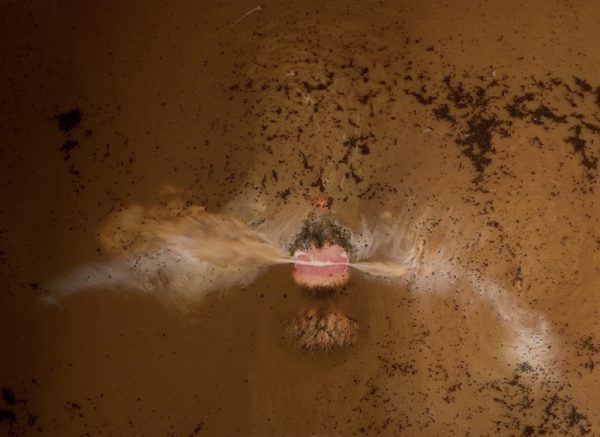
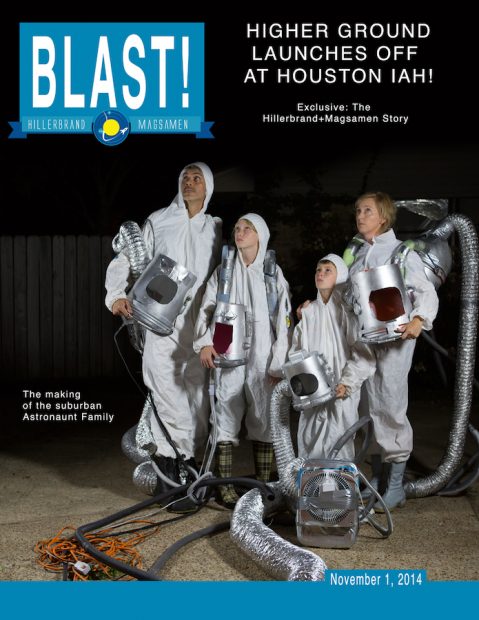
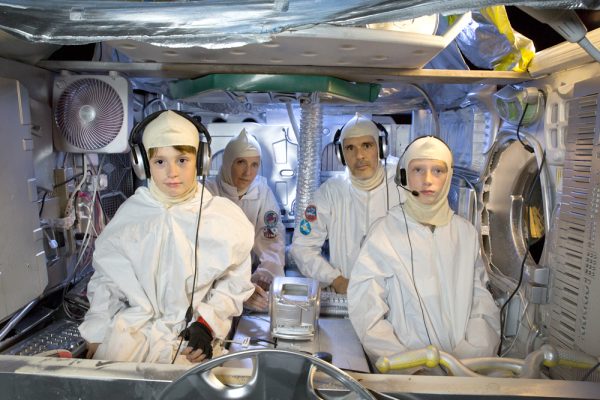
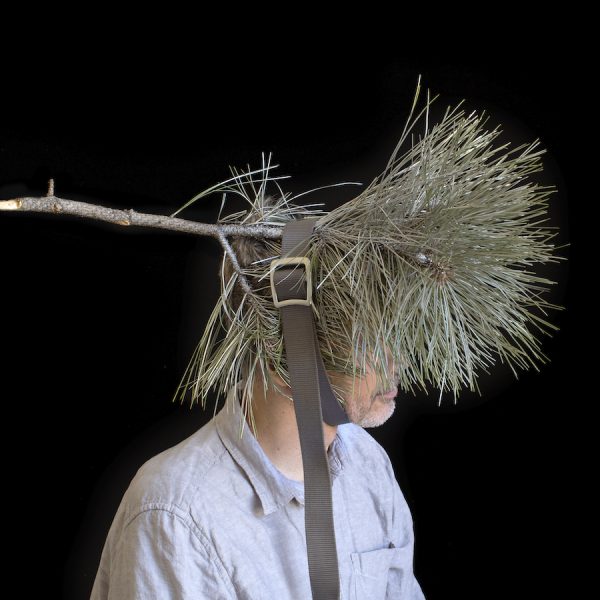

1 comment
It’s a beautiful day in the neighborhood. Wonderful to have such energy right in our own neighborhood. Keep creating.